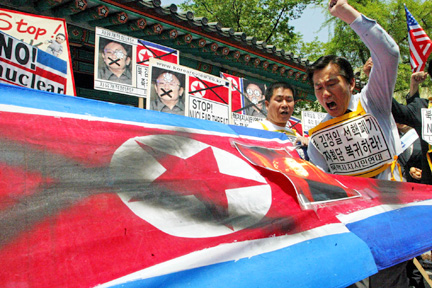
|
Inouye fights military
command shift
A plan would move Pacific Fleet
control to Virginia headquarters
U.S. Sen. Daniel Inouye is fighting a Pentagon plan to shift command of the Pacific Fleet's major fighting forces and vessels from Pearl Harbor to the Atlantic Coast, a move he said was slated for Oct. 1.
The Pacific FleetThe Pentagon plans to put the Pacific Fleet's operations under Atlantic Coast control come Oct. 1. The Pacific Fleet has:
» 190 ships and submarines.
|
"Such a move would send the wrong message to the international community at a time when the North Koreans are boasting of having nuclear capabilities, when Japan-China relations have hit a rough point and when the United States and Japan are negotiating a mutual defense pact," he said yesterday.
The Pentagon's plan would mean that operational control of Pacific Fleet's 190 ships and submarines, 1,400 aircraft, 191,000 sailors and Marines and 30,000 civilians would shift from Hawaii. Adm. Walter Doran commands the fleet, but he is scheduled to be replaced this summer by Vice Adm. Gary Roughead.
Under the Pentagon plan, control of the Pacific Fleet's Submarine Forces, Naval Air Force and Naval Surface Force would go to the Fleet Forces Command in Norfolk, Va., in October.
The command of Pacific Fleet's submarine force of 40 subs is now located at Pearl Harbor. The two other major command headquarters, in charge of its aircraft and surface warships, are in San Diego, under control of a Pearl Harbor admiral.
Jon Yoshishige, Pacific Fleet spokesman at Pearl Harbor, said yesterday that changes in the Navy's force structure is an "ongoing discussion. ... Nothing has changed in the force structure."
Inouye said the timing is not right for such an operational command change.
The House approved the $82 billion spending bill on Thursday, and the Senate will vote on the measure next week when it returns from a week-long recess. Approval is expected.
Hawaii's senior senator noted that the Pentagon's base realignment and closure recommendations have not yet been released, and the military should wait for a year "before making a decision of this magnitude."
The Pentagon's base closure list is due to be out on May 16.
"The Asia-Pacific region must be monitored closely, and at this time I am not convinced that monitoring that region can best be done from the Atlantic," Inouye said.
In 2002 the newly formed U.S. Northern Command assumed control of the Atlantic Fleet but not the Pacific Fleet, which remained under a Pearl Harbor admiral's control.
Three years ago, Inouye and Sen. Daniel Akaka, both Hawaii Democrats, Republican Sen. Ted Stevens of Alaska and U.S. Rep. Neil Abercrombie (D, Urban Honolulu) criticized proposals to move Navy and Marine forces in Washington state and California, now controlled by the Hawaii-based Pacific Command, to the new Northern Command.
The Pentagon later reversed itself and allowed the U.S. Pacific Command at Camp Smith to continue to control the U.S. 3rd Fleet in San Diego and associated Marine units on the West Coast, as well as military units in Alaska.
[News] [Business] [Features] [Sports] [Editorial] [Do It Electric!]
[Classified Ads] [Search] [Subscribe] [Info] [Letter to Editor]
[Feedback]
